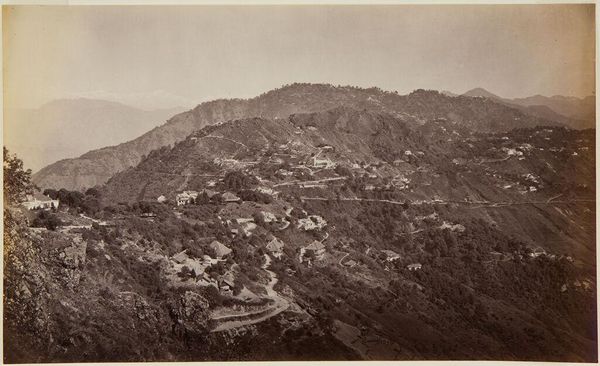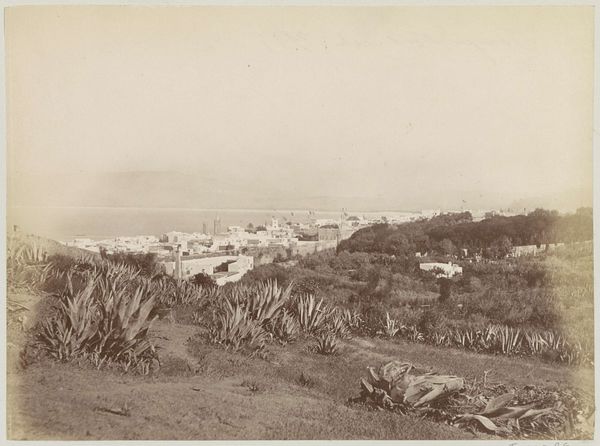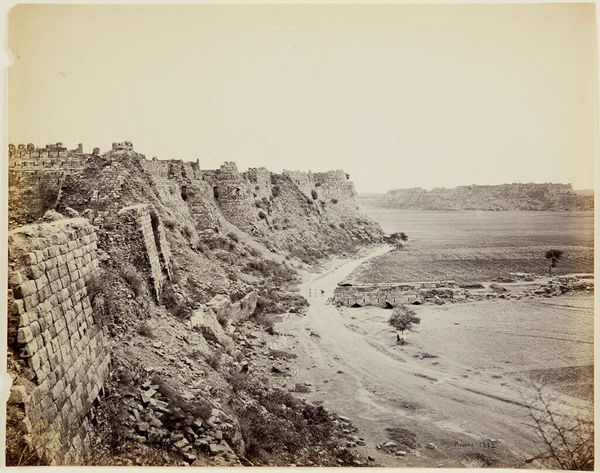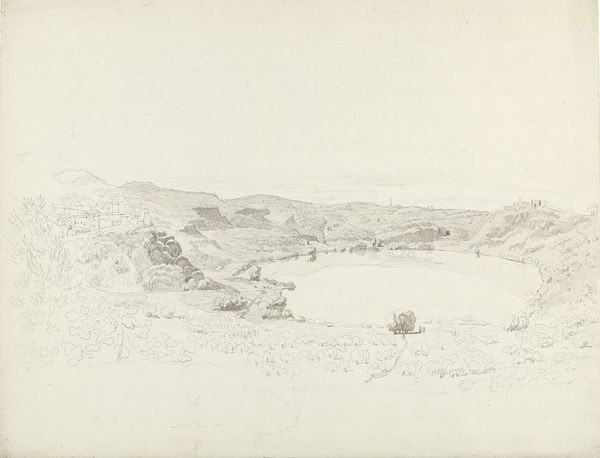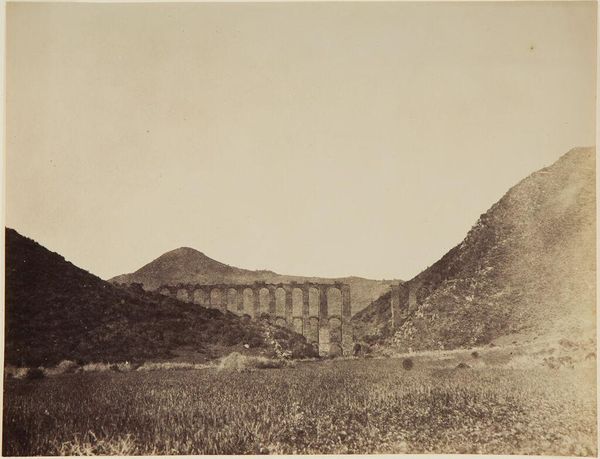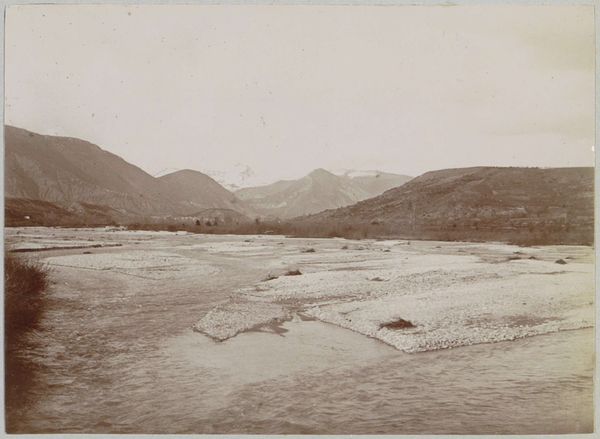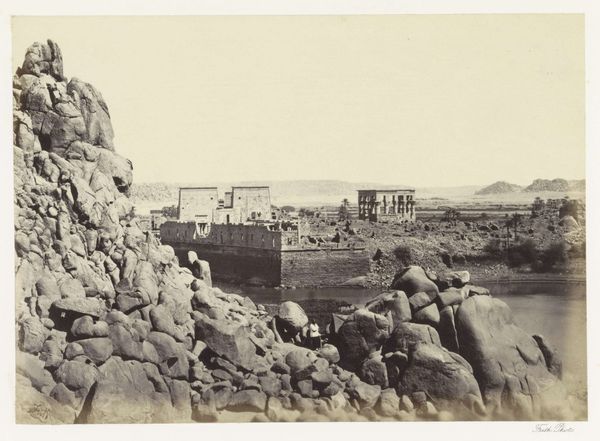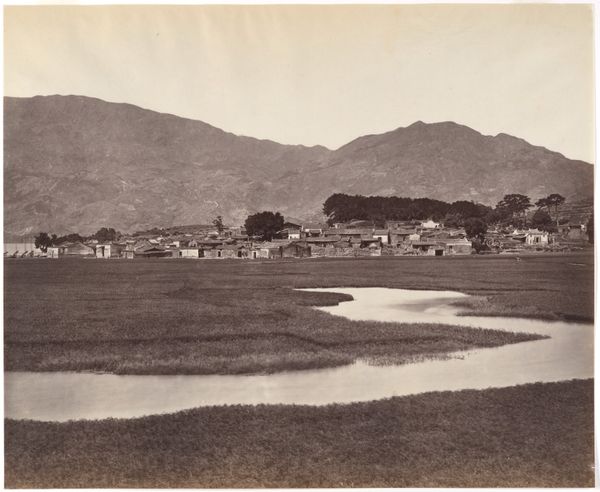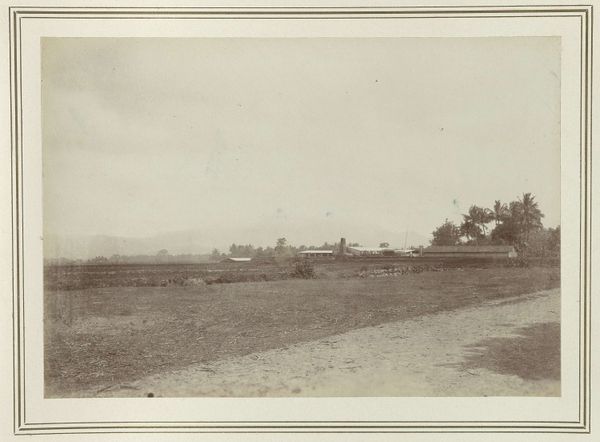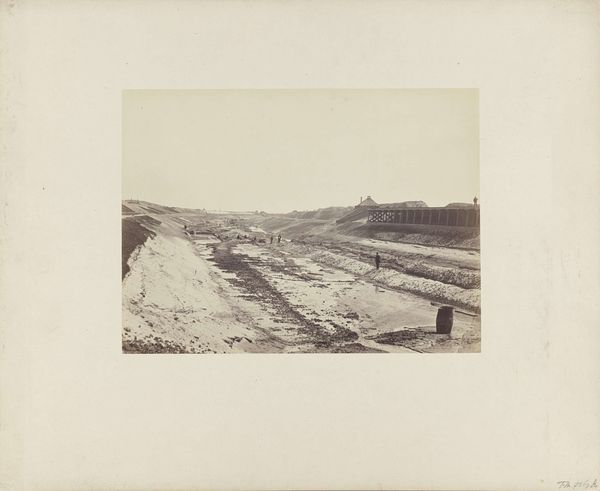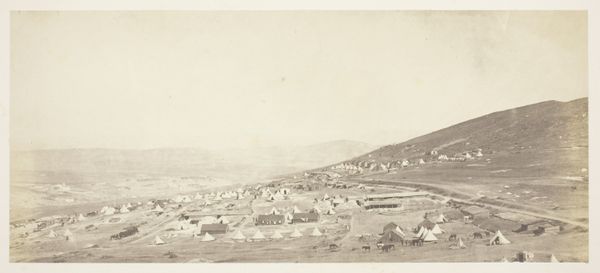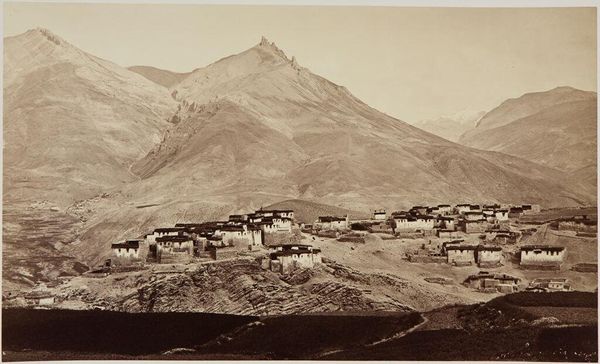
Gezicht op een stad met bergen op de achtergrond, mogelijk Tétouan c. 1880 - 1910
0:00
0:00
print, photography, albumen-print
# print
#
landscape
#
outdoor photography
#
photography
#
orientalism
#
cityscape
#
albumen-print
Dimensions: height 155 mm, width 217 mm
Copyright: Rijks Museum: Open Domain
Editor: Here we have Antonio Cavilla's albumen print, "Gezicht op een stad met bergen op de achtergrond, mogelijk Tétouan," dating from around 1880 to 1910. The sepia tones give it such a tangible sense of the past. What stands out to you in this landscape? Curator: What intrigues me is the albumen process itself. Consider the labour involved: preparing the paper, coating it with egg whites, exposing the print. Each step a careful manipulation of materials and a testament to photographic production as craft, not just art. How does the materiality shape your experience of the landscape represented? Editor: That’s a fascinating point! It shifts my perspective. It's no longer just a pretty view but also a physical object shaped by a very specific historical process. Does this connect with the "Orientalist" label attached to the artwork? Curator: Absolutely. "Orientalism" often meant a Western gaze consuming and producing images of the "Orient". Examining the commercial context – who was buying these prints, how were they circulated, and what did they signify for their owners— unveils the social and economic forces intertwined with the making of this image. Editor: So, the print acts as both a depiction and an artifact, reflecting social structures? Curator: Precisely. It urges us to think beyond the scenic representation and towards the means of production, distribution and consumption embedded in its existence. How does knowing this change your understanding? Editor: I see it as a manufactured object now, a piece of colonial commerce as much as it is an artistic impression. Thank you, that's really enlightening! Curator: My pleasure! Thinking about the materials and context, reveals the power relations at play and how art becomes entangled with history.
Comments
No comments
Be the first to comment and join the conversation on the ultimate creative platform.
